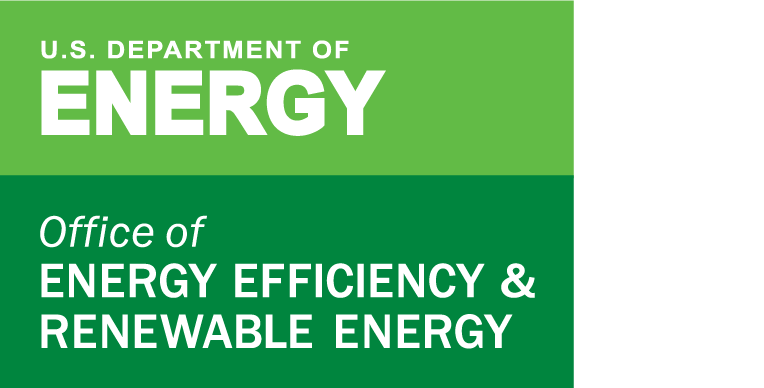Federal Aviation AdministrationAir Traffic Control Tower
The Federal Aviation Administration selected CTI as its energy efficiency partner for the DOE ESPC ENABLE program at the Air Traffic Control Tower in Corpus Christi, Texas.
The federal government owns more than 300,000 buildings. While most of them are property of the military branches, about 1/3 of them are owned by the other federal agencies. Many of these are managed by the Government Services Administration. The GSA consists of two major services: The Federal Acquisition Service and the Public Buildings Service.
Based on the Federal Energy Management Program’s Energy Savings Performance Contracting, the GSA formed the ESPC ENABLE program to enhance the energy efficiency of its properties. The focus of ESPC ENABLE is buildings with less than 200,000 square feet but with no limit to the size of the energy efficiency installations.
To streamline the procurement of ESPCs, GSA requires contractors to apply for and attain certification in the Schedule 84 and work through its GSA Advantage Program. CTI is the only national Energy Service Company to qualify for Schedule 84.
Goals
The goal of the project was to install electricity and water conservation measures and installed solar PV to help the FAA meet its federal renewable electricity generation mandate while reducing its overall utility costs at the site. The non-native landscaping required a large amount of irrigation. The project incorporated xeriscaping to significantly reduce water usage.
Challenges
Challenges arose on several fronts. Due to the low electric utility rate, CTI’s analysis of energy efficiency measures needed to meet the FAA’s needs discovered an investment payback of more than 30 years. Since the term of the contract could be no longer than 25 years, this presented a quandary affecting the entire project. The energy audit also revealed failures in the site’s computer room air handling units and controls causing elevated temperatures that could affect computer functions. Another concern of the FAA was their boiler was experiencing premature failure.
Results
Positive results followed cooperative problem-solving CTI developed with the FAA engineering and contracting staff. CTI resolved the contract term issue by finding a financier able to provide a low interest rate and funds while the FAA made a partial pay-down of the loan that allowed the loan term to meet ESPC prerequisites. CTI also acquired significant energy rebates from the local utility to further reduce project costs.
To protect the servers and increase energy efficiency of air handling equipment, CTI installed higher efficiency computer room air conditioning units with an advanced energy management control system that allowed the units to work together preventing simultaneous heating and cooling or humidification and dehumidification. . Electric usage on site was also significantly reduced by an interior and exterior lighting upgrade to LED.
To reduce irrigation levels, we removed the watering-intensive grass and plants, CTI’s landscape subcontractor xeriscaped the grounds to fit the hot conditions of southern Texas and reduce water use, and CTI installed energy conserving water measures inside the Control Tower.
Through discussion with the site personnel and from a survey of the heating system, we determined that the premature failure of boilers at the site was likely caused by low return water temperatures with a standard boiler. CTI made use of the fact that the heating system was already producing adequate heat at a reduced water temperature and installed a high efficiency condensing type gas boiler that is designed to provide higher efficiency at lower return water temperatures. CTI also changed the control of the heating loop to vary with outdoor temperature.
The major cost component of the project was the solar photovoltaic installation. CTI contracted with a local solar installer who erected a parking structure with solar panels on the roof as well as establishing a ground-mounted solar array.
CTI concluded construction and the work was commissioned in 2019. CTI will conduct annual Measurement and Verification reporting on the equipment’s performance for the term of the contract.
Energy Savings Guaranteed
$2,560,270
Est. Water Savings
36 million gallons
Est. CO2 Reduction
6,800 metric tons
Location
Corpus Christi, TX
Completion Date
2019
Capital Cost
$1,442,000
Term of Contract
20 years
Energy Savings Guaranteed
$2,560,270 Total
Estimated Water Savings
36 million gallons
Estimated Greenhouse Gas Reductions
6,800 Metric Tons of CO2
Environmental Benefits
Equivalent to preserving 9,000 acres of forest from deforestation, or removing 1,500 autos from the road, and water savings equivalent to 600,000 standard bathtubs filled to overflow drain.*
*Sources: 1. Savings listed are 100% predicted utility savings numbers; 2. The avoided greenhouse gasses for electric are from EPA AVERT program and are geographically specific.See details.
ESPC ENABLE Program
The ESPC ENABLE program allows small federal facilities to realize energy and water savings, typically in six to twelve months from the time a Notice of Opportunity (NOO) is issued.
ESPC ENABLE provides a standardized and streamlined process to install targeted energy conservation measures (ECMs) such as lighting, water fixtures, basic HVAC controls, simple HVAC system replacement (including packaged equipment, boilers and chillers) and solar photovoltaics (PV).
ESPC ENABLE is suitable for smaller facilities, although there are no specific size restrictions, to make progress towards important energy efficiency and water conservation requirements. It is also suitable for sites where ESPC ENABLE may present the best or only funding option.
CTI participates in the GSA Advantage Program. Through GSA advantage in 2018, the government purchased more than $230,000,000 in building services and supplies.






